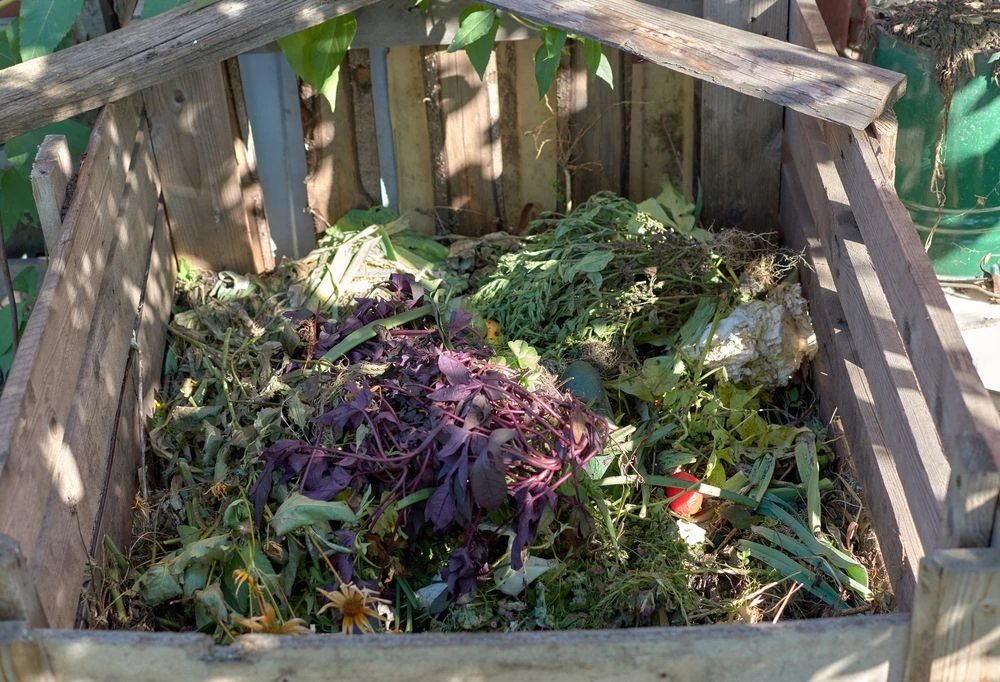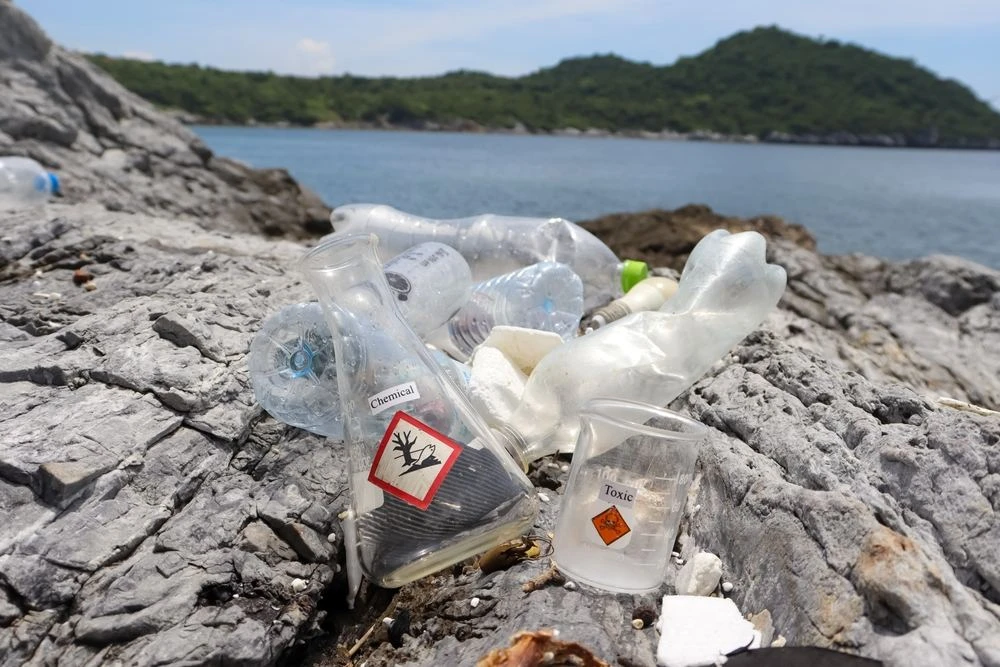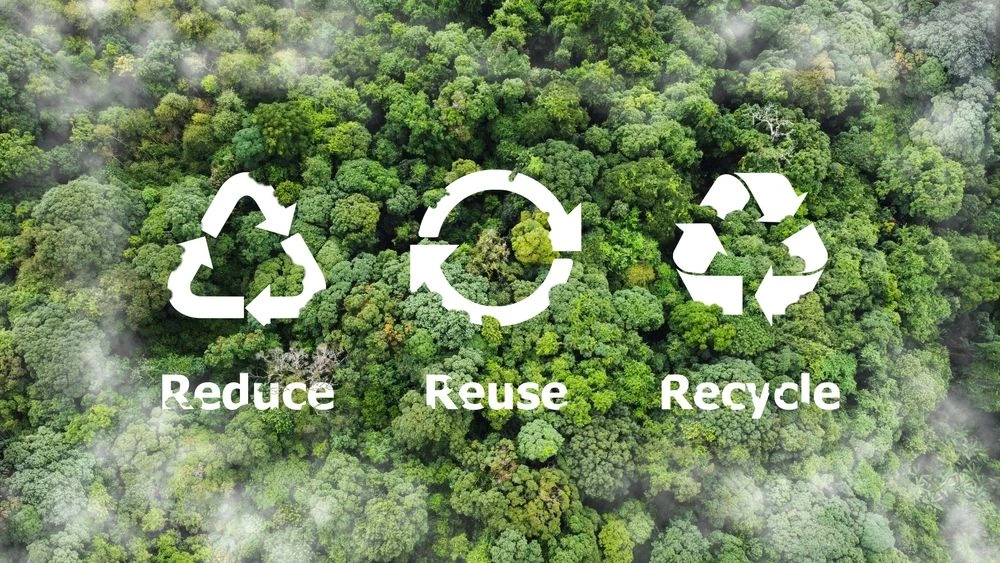Introduction
Biodegradable and non-biodegradable substances refer to the materials that make up the products and waste we use and discard in our daily lives. Biodegradable substances are made from organic materials and have a positive impact on the environment when properly managed and disposed of. Non-biodegradable substances, on the other hand, are made from synthetic materials and do not break down in the natural environment. It is important to minimize our use of non-biodegradable substances and properly manage both biodegradable and non-biodegradable waste in order to protect the environment and promote sustainability.
Biodegradable Waste and Biodegradable Material
Biodegradable waste materials are materials made from organic matter, such as starch-based plastics or plant-based fibers, which can be broken down by natural processes into the water, carbon dioxide, and biomass. Unlike traditional plastics, which can persist in the environment for hundreds of years.
Examples of Biodegradable substances
Some common examples of biodegradable substances include:
- Food waste, such as fruit and vegetable scraps, bread, and meat
- Yard waste, such as leaves, grass clippings, and tree branches
- Paper products, such as newspaper, paper towels, and cardboard
- Textiles made from natural fibers, such as cotton or wool
- Biodegradable plastics made from renewable materials, such as corn starch or sugarcane
- Manure and sewage sludge
- Wood chips and sawdust.

Non-Biodegradable Waste and Non-Biodegradable Material
Non-biodegradable material refer to a material that does not break down into natural substances over time and persist in the environment for long periods. These materials are typically synthetic, made from petrochemicals, and do not decompose in the natural environment.
Non-biodegradable waste refers to discarded items made from non-biodegradable materials that cannot be decomposed by natural processes. Examples of non-biodegradable waste include plastic bags, polystyrene packaging, and aluminum cans. Unlike biodegradable waste, non-biodegradable waste can persist in the environment for hundreds of years and can cause environmental problems if not properly disposed of.
Examples of Non-Biodegradable substances
Some common examples of non-biodegradable substances include:
- Traditional petroleum-based plastics, such as polyethylene (PE) and polypropylene (PP)
- Aluminum cans and foil
- Glass bottles and jars
- Metal products, such as steel cans and car parts
- Electronic waste, such as computers, phones, and televisions
- Synthetic fibers, such as nylon and polyester
- Certain types of synthetic rubber and paints
- Fire retardants and flame-retardant materials.

Effect of Biodegradable and Non-Biodegradable Substances on the environment
The effects of biodegradable and non-biodegradable substances on the environment can vary greatly.
- Biodegradable substances, such as food waste and yard waste, can have positive impacts on the environment when properly managed. For example, food waste can be composted and added to soil as a natural fertilizer, improving soil health and reducing the need for chemical fertilizers. Yard waste can also be composted, or used as mulch to retain moisture in the soil.
- On the other hand, non-biodegradable substances can have harmful impacts on the environment. When not properly disposed of, non-biodegradable waste, such as plastic bags and polystyrene packaging, can litter the environment, harm wildlife, and take hundreds of years to break down. Landfills overflowing with non-biodegradable waste can also release toxic substances into the air and water, causing further harm to the environment and human health.
- In addition, the production of non-biodegradable materials, such as petroleum-based plastics, can contribute to greenhouse gas emissions and other environmental problems associated with the extraction and processing of fossil fuels.
- When these wastes build in the soil, they affect the pH and fertility of the soil. Non-biodegradable trash should be reused, reduced, or repurposed rather than dumped into oceans, as this constitutes a significant environmental risk.
Overall, it is important to properly manage both biodegradable and non-biodegradable substances in order to minimize their negative impacts on the environment.

Differences between biodegradable and non-biodegradable substances:

Conclusion
Biodegradable compounds are those that can be broken down or decomposed by the action of microbes or any form of life, whereas non-biodegradable substances are those that cannot be broken down into little pieces by the action of any kind of life. Organic wastes that degrade quickly are considered biodegradable wastes. Plastics and glassware are examples of non-biodegradable garbage that require thousands of years to disintegrate. All sorts of garbage affect our environment and all types of life on the planet. As a result, waste treatment is critical, which includes recycling, reusing, and decreasing.
Frequently Asked Questions
1. What is the three R’s stand for?
The “Three R’s” stand for Reduce, Reuse, and Recycle. They are a widely recognized hierarchy of waste management and sustainability that encourages individuals and organizations to minimize waste and promote sustainability by reducing their consumption of resources, reusing products and materials whenever possible, and recycling materials that cannot be reduced or reused.
2. What is a biodegradable polymer?
A biodegradable polymer is a type of plastic that is designed to break down and decompose into natural substances over time through the action of microbes, heat, and other environmental factors. Biodegradable polymers are typically made from renewable resources, such as plant-based materials, and are designed to be more environmentally friendly than traditional petroleum-based plastics.
3. What is biodegradable degradation?
Biodegradable degradation refers to the process of breaking down and decomposing organic material into natural substances through the action of microbes, heat, and other environmental factors. This process is a natural and essential part of the earth’s ecosystem and helps to recycle nutrients and other substances in the environment.
 Mission Statement
Mission Statement
“Empower every student to achieve full potential”
88Guru has been established with the social objective of making quality video-based learning material available to all Indian students. Technology, Connectivity and Social Media are rapidly changing the world of Education and we wish to lead the transformation of the tuition industry in India.
88Guru is the perfect complement to the current tuition model. 88Guru creates a wonderful opportunity for children and parents to bond while engaging in a valuable learning activity. It also provides the complete curriculum at your fingertips for those moments when you need some help at short notice. We believe that this mode of tuition could be transformational, adding hours to a child's day while providing complete control over the learning process.
Every course is taught by the best teachers from India's top schools and conducted in an engaging manner to keep students involved. The e-learning process consists of video-based instructions, computer-graded assignments, and a dashboard which allows the student and parent to track progress.


